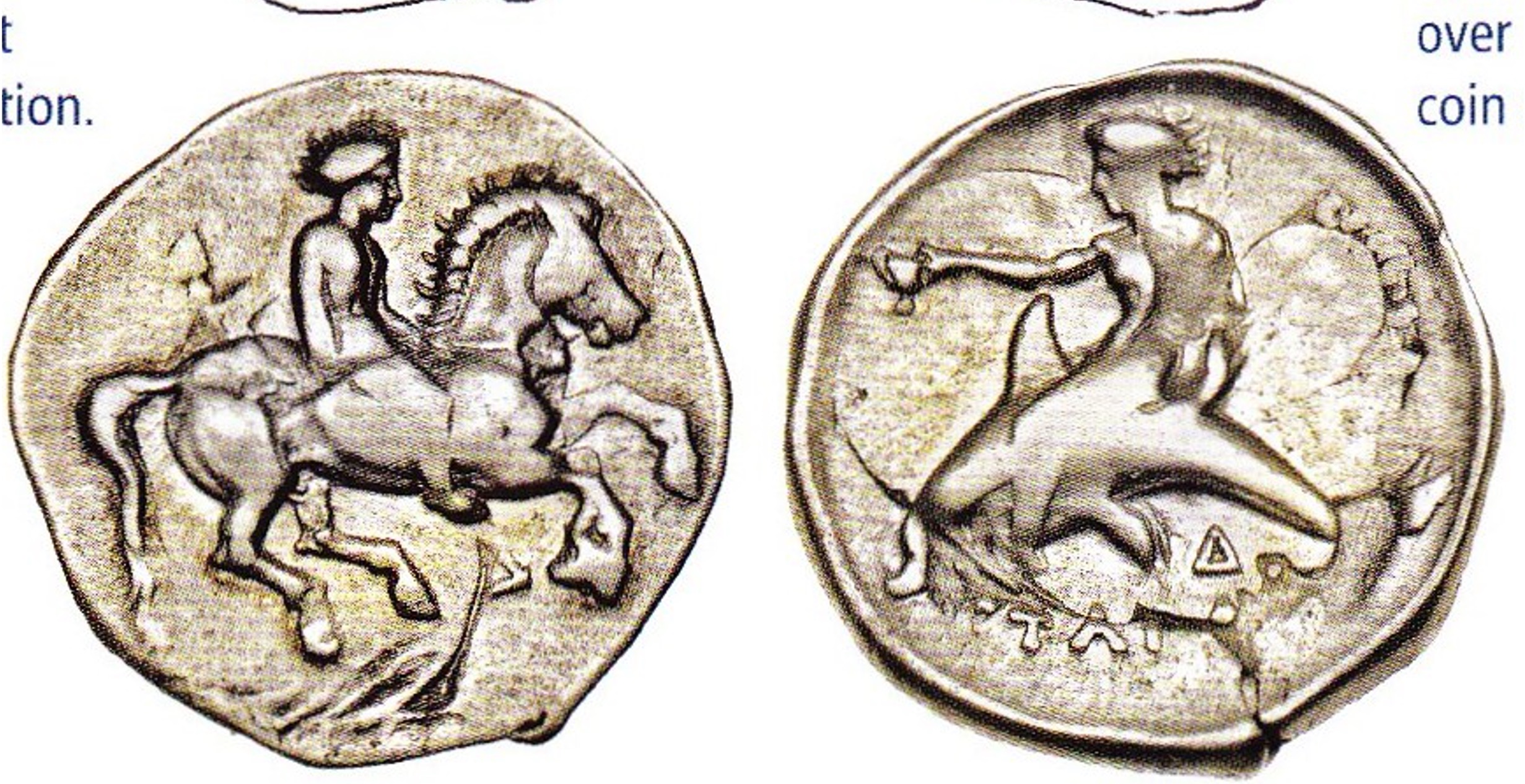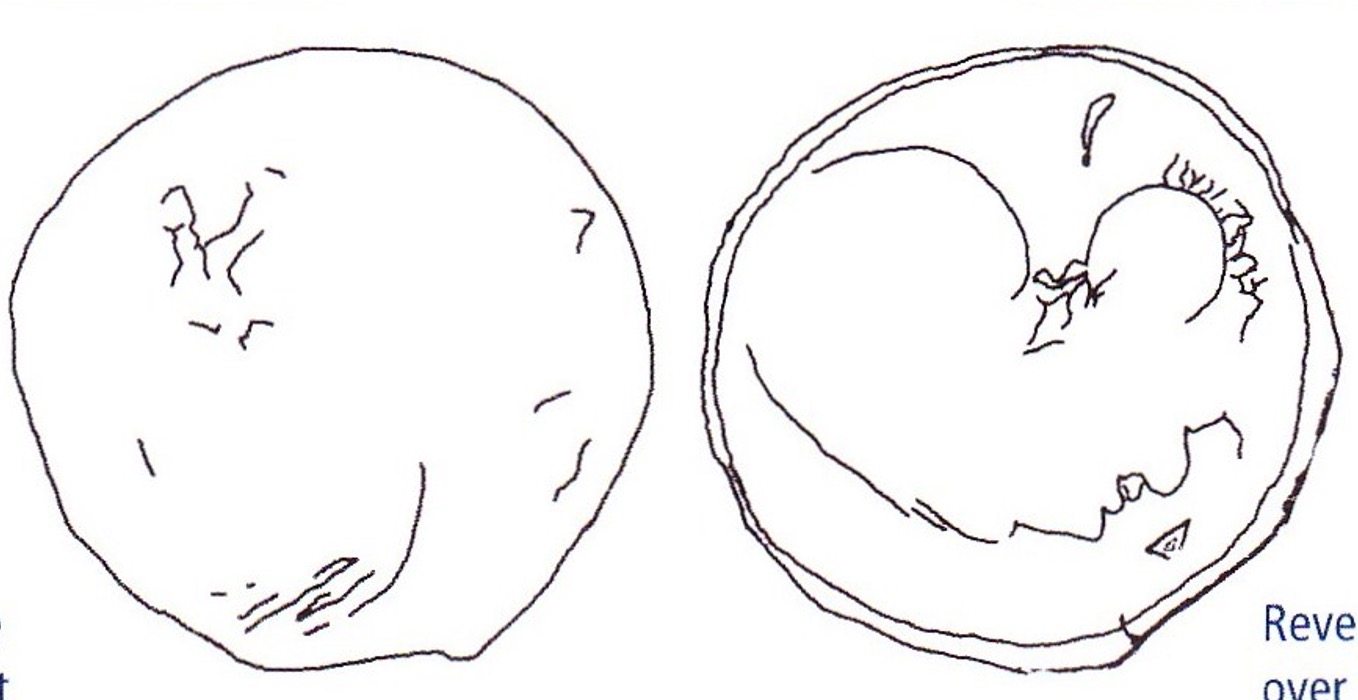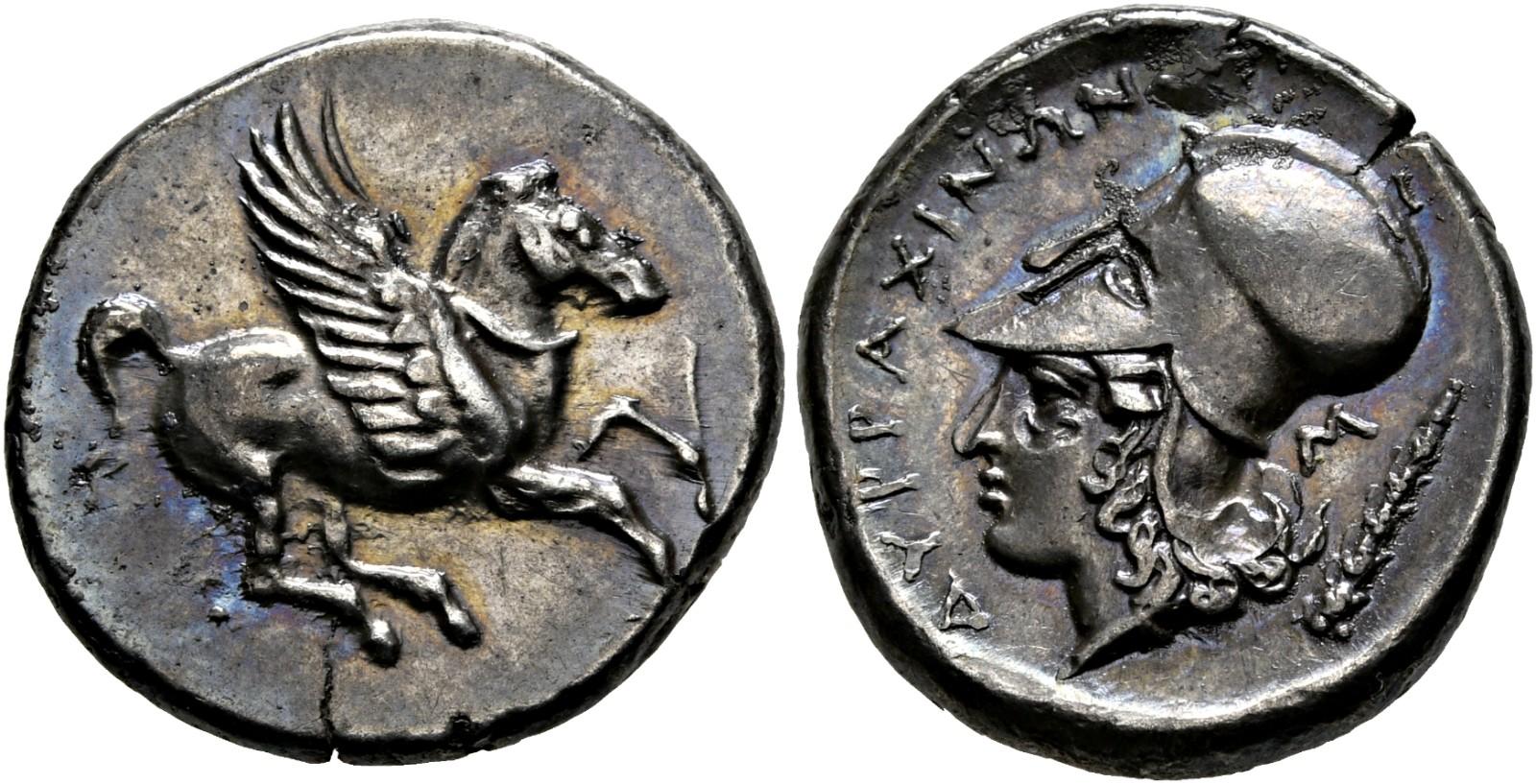365 BCE - 355 BCE | TAPAΣ
Overstriking coin
SO 1339 - Taras over Dyrrhachium.jpg
Overstruck variety
Traces of the overstruck variety
1339 Dyrrhachium (drawing).jpg
Description
| ObverseInscription or printing placed on the obverse.:
|
Horseman cantering right, arm hanging at side. Below horse, Δ.
|
ReverseInscription or printing placed on the reverse.:
|
TAPAΣ (Greek) Male character (Taras or Phalanthos), nude, seated sideways on dolphin left, holding kantharos in extended arm.
|
Mint and issuing power
| MintIdentifies the place of manufacture or issue of a numismatic object.:
|
Taras
|
Ancient regionAncient region.
|
Calabria
|
Modern countryModern country: Italy
|
AuthorityIdentifies the issuing power. The authority can be "pretended" when the name or the portrait of X is on the coin but he/she was not the issuing power. It can also be "uncertain" when there is no mention of X on the coin but he/she was the issuing power according to the historical sources:
|
|
Chronology
| FromIdentifies the initial date in a range assigned in a numismatic context. 365 BCE toIdentifies the final date in a range assigned in a numismatic context.. 355 BCE
|
Classical 480-323 BC  periodTime period of the numismatic object. periodTime period of the numismatic object.
|
Physical description
MetalThe physical material (usually metal) from which an object is made.: Silver 
|
WeightWeight of the numismatic object (in grams). in grams: 7.717.71 g <br />7,710 mg <br />
|
DenominationTerm indicating the value of a numismatic object. Examples: tetradrachm, chalkous, denarius.: nomos
|
AxisDescribes the directional relationship between the obverse and reverse of a numismatic object.: 22 mm <br />0.2 cm <br />
|
|
|
StandardStandard.: Achaian
|
References
| Coin referenceReference of the Coin:
|
Fischer-Bossert 1999, n° 612, MacDonald 2009, p. 8, n° 4
|
Coin series referenceReference to coin series study:
|
Fischer-Bossert 19991Fischer-Bossert 1999, group 40, n° 612 (V240/R468), MacDonald 20092MacDonald 2009, p. 8, n° 4, HN Italy3HN Italy, n° 880, HGC 14HGC 1, n° 777
|
| Coin series web referenceCoin series web references:
|
|
Description
| ObverseInscription or printing placed on the obverse.:
|
ΔΥΡΡΑΧΙΝΩΝ (Greek) Pegasus flying left. Below, Δ (visible: rear legs, portion of wing, other slight traces).
|
ReverseInscription or printing placed on the reverse.:
|
Head of Athena left, wearing Corinthian helmet. Behind, club (visible: outline of Athena's head. Before Δ. Behind head, small portion of club).
|
Mint and issuing power
| MintIdentifies the place of manufacture or issue of a numismatic object. ᵖ:
|
Dyrrhachium
|
Ancient regionAncient region. ᵖ
|
Illyricum
|
Modern countryModern country: Albania
|
AuthorityIdentifies the authority in whose name (explicitly or implicitly) a numismatic object was issued. ᵖ:
|
|
Chronology
| FromIdentifies the initial date in a range assigned in a numismatic context. 435 BCE toIdentifies the final date in a range assigned in a numismatic context.. 433 BCE
|
Classical 480-323 BC  periodTime period of the numismatic object. periodTime period of the numismatic object.
|
Physical description
| DenominationTerm indicating the value of a numismatic object. Examples: tetradrachm, chalkous, denarius. ᵖ:
|
stater 
|
|
|
References
 Traces of the overstruck variety
Traces of the overstruck variety

